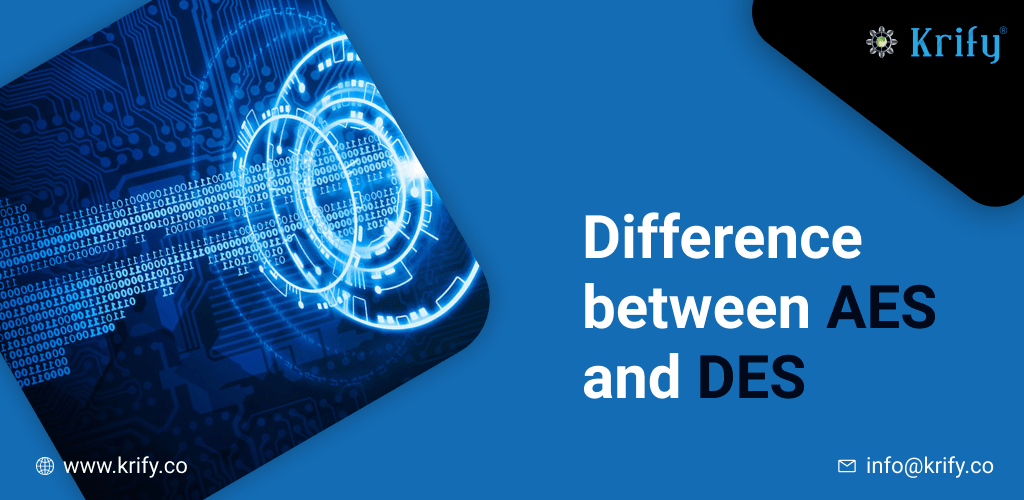Many applications and websites are based on credentials and password authentication tools to access sensitive data, Therefore, Consumers can’t do anything to encrypt their passwords other than use a password manager. A professional password manager must use high-quality encryption to protect what is a treasure trove of data. Encryption is a fundamental yet crucial part of data privacy and protection. A great deal of private information, including financial information and Social Security numbers, is exchanged electronically, and it is important to keep that information secure.
Companies and governments who have customer and employee data have to, at the very least, use AES or DES encryption as well as tools and methods for ensuring that the data is accessible by approved users, for example, two-factor authentication. We meet someone every so often who still uses DES for encryption. If your company has not migrated to the AES, it is time for an update.
What is DES encryption?
DES is the old symmetric encryption system used by the US Government as a regular method. Since then, it has been removed as a safety standard since many modern applications do not consider it robust enough. However, DES is still used today as it is simple to implement, especially if computing power is limited.
A DES key consists of 64 digits (0s and 1s) which are randomly generated by an algorithm, otherwise referred to as “bits.” For error detection, the other 8 bits are used. People using this standard know the encryption algorithm, but the decryption key is not available to unauthorized individuals. The 56-bit key is too thin, and DES is insecure.
What is AES encryption?
AES(Advanced encryption standard) is still the US government standard process and is known to have been one of the safest algorithms today, alongside several private organizations. Most attacks require a degree of computing power currently impossible to achieve to break this algorithm.
AES is a symmetric algorithm for encrypting and decrypting data block sizes of 128 bits using 128, 192, and 256 bits keys. The length of the keys increases the problem of decrypting the code exponentially. In 2002 AES became the standard, and every five years, NIST revalues it to identify defects and develop them.
Examples of AES usage
Here are some of the examples of AES:
- Mobile applications. AES encryption is used to transfer information such as images and messages securely by many common applications such as Snapchat and Facebook Messenger.
- Compression software and archives. All major file compression systems use AES to prevent leakage of data. The following resources include 7z, WinZip, and RAR.
- Components of the OS scheme. Some OS elements (such as file systems) use the advanced encryption standard for an additional safety layer.
- Language libraries programming. AES encryption is implemented in libraries such as Java, Python, and C++. Language libraries programming. AES encryption is implemented in libraries such as Java, Python, and C++. Language libraries programming. AES encryption is implemented in libraries such as Java, Python, and C++. Language libraries programming. AES encryption is implemented in libraries such as Java, Python, and C++. Language libraries programming. AES encryption is implemented in libraries such as Java, Python, and C++. Language libraries programming. AES encryption is implemented in libraries such as Java, Python, and C++.
Difference between DES and AES encryption
- DES Expansion Permutation can be used, such as Xor, S-Box, P-box, Xor, and Swap. There are sub bytes, shift rows, columns, additional keys in the AES rounds on the other hand.
- Because of its small key size, DES is less precise than AES.
- AES is much faster than DES.
- The fundamental difference between DES and AES is that before further processing, the block in DES is split into two halves, while ciphertexts are processed for the entire AES block.
- DES is based on the Feistel chip theory and AES is based on the substitution and permutation principle.
- The DES key sized is 56 bits, marginally lower than the AES size with a 128,192 or 256 bits secret key.
Conclusion:
DES is the older, and AES is the fastest and safer advanced algorithm than DES. For companies, it is, therefore, necessary to understand the difference between DES and AES and enforce or adopt the best pattern.
At Krify, we have a team of professional developers who are well versed with trending technologies and deploy safer and secured outputs based on the requirements shared by the clients. If you would like to know more about the difference between AES and DES, our professional team will assist you with it. For more information, contact us.




